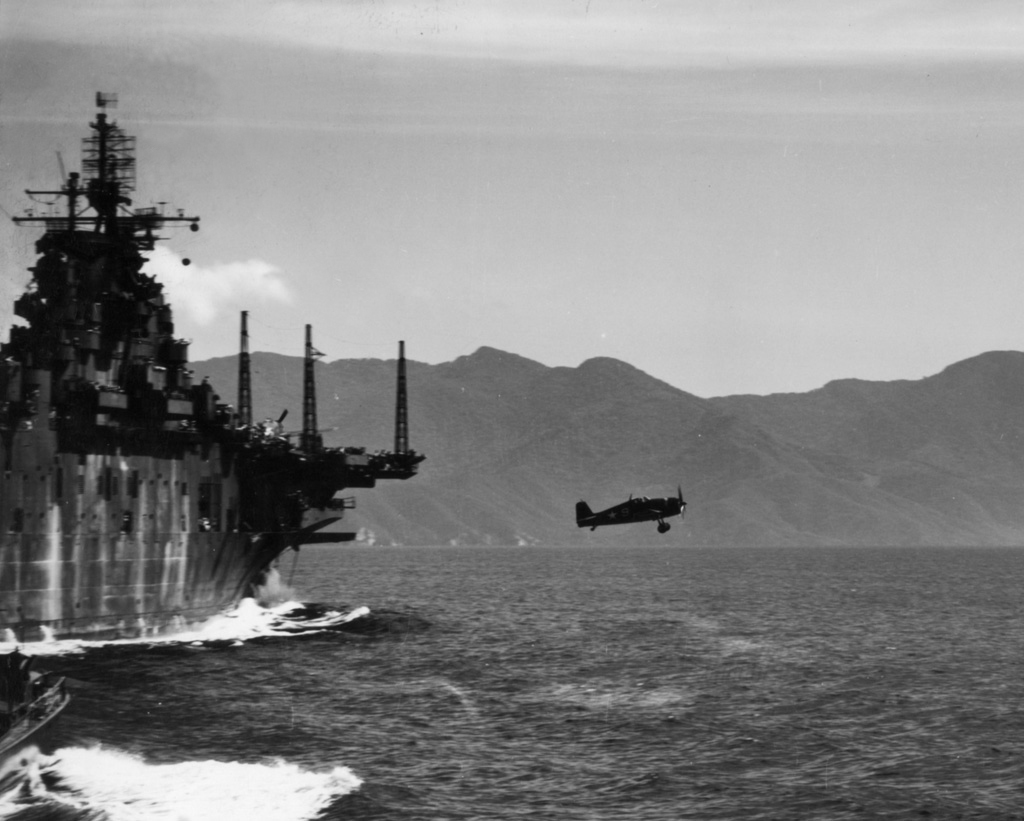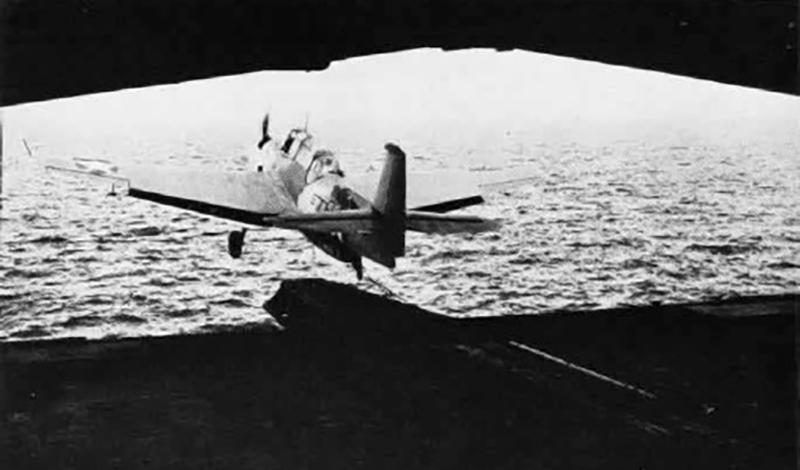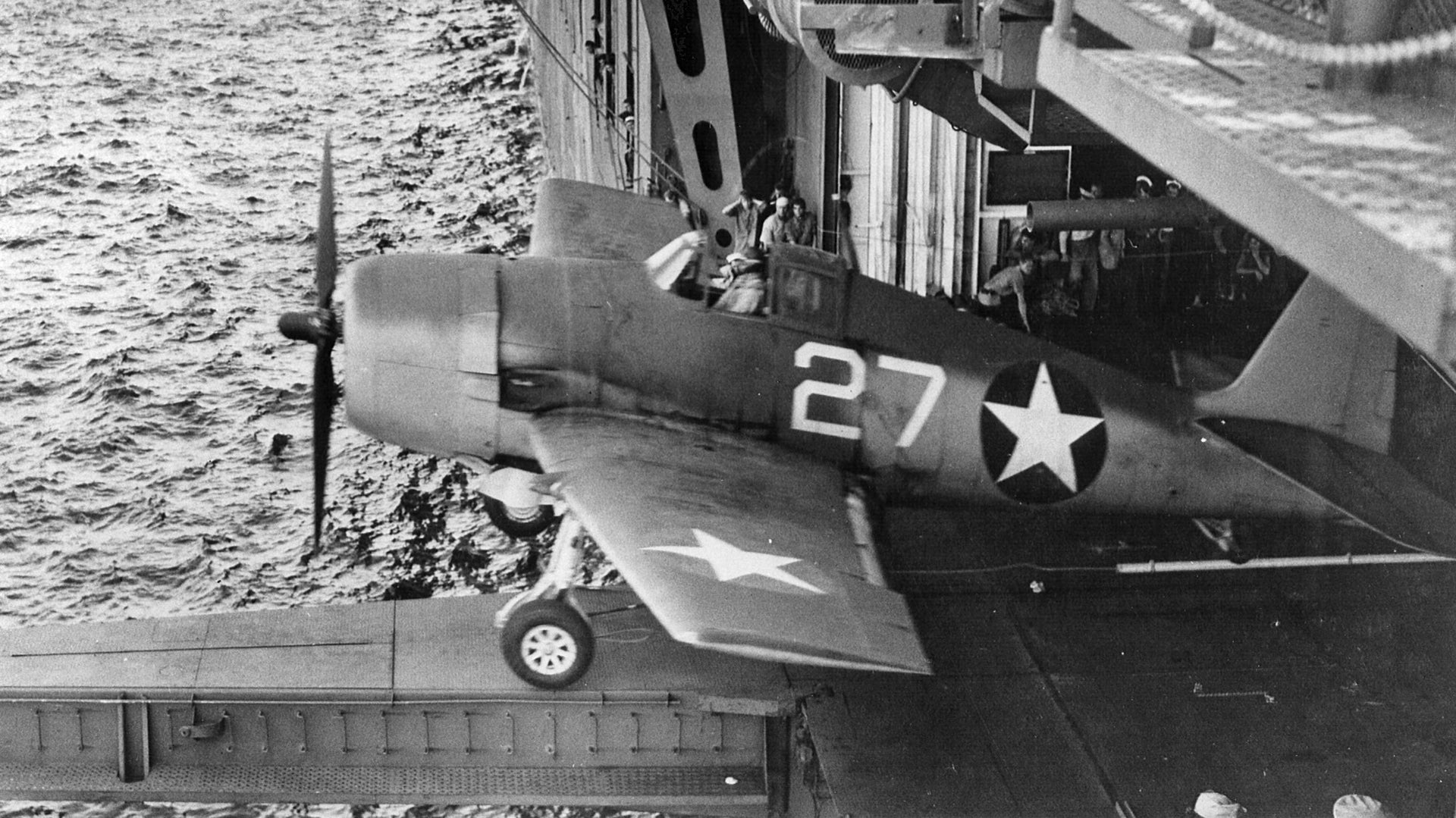Naval aviation blossomed rapidly during World War II, a time when the aircraft carrier became the centerpiece of naval strategy. As a result of the aircraft carrier’s rise in prominence, carrier design and technology advanced quickly through the war years, leading to some pretty awesome and long-lived technical revelations, and, well, others that were less so. One of these evolutionary dead-ends was the hangar catapult.
It sounds nuts to begin with right? But before the angled deck was introduced, aircraft carrier designers had to figure out how they could quickly launch a scout aircraft even when the straight deck flattop was a chaotic mess or undergoing recovery operations. So the idea was to put a catapult that ran across the beam of the ship down in the hangar bay, with big doors on each side. This way, a scout plane or two could be launched in a pinch when the top deck was fouled.

Details are less than plentiful on this obscure topic, but as we understand it, the hangar catapult was installed on at least the first six Essex class ships, aside from Essex which was rushed into service. The aircraft launched out of the forward area of the hangar bay in either direction through two massive hangar bay doors. Sponson extensions that resembled bridle catchers (which came later) jutted out from either side of the open hangar bay when the catapult was in use.

Keep in mind, these catapults were shorter and offered a quicker stroke than the upper deck systems, and the aircraft did not have the benefit of the wind blowing over deck for help to become airborne either. Even a cross wind was more usual than not. As such, it was a wild ride for crews tasked with getting airborne from the hangar deck.

At first the hangar catapult feature was deemed so important that when it was shown that it threw off the ship’s weight distribution, the port side top deck catapult was omitted to compensate. The novel design element was short lived though. By 1944 they were removed entirely during ship refits—aside from one ship, the USS Hornet—and both deck catapults were installed instead.

Some of the reasons for the demise of the hangar catapult were because it came at the expense of a deck catapult and the hangar bay had to be clear in the area of the catapult when an aircraft was on alert or to be launched. The Navy also found out that it could manage without the odd device via targeted training, careful planning and close coordination with other carriers in the flotilla—when they were present. But above all else, the advent of radar made scout planes far less important for early warning, and thus the hangar catapult was more of a liability than anything else.
Contact the author: Tyler@thedrive.com
